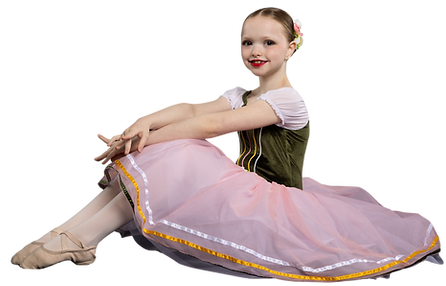5 Things Every Parent Should Know Before Choosing a Dance School
- Principal
- Dec 7, 2020
- 3 min read
If most dance studios seem to have friendly qualified teachers, convenient class times, and a big show at the end of the year, aren’t they all pretty much the same? Does it really matter which place you enroll your child? The answer is yes! There are 5 main elements that can make a huge difference in the instruction your child receives and the overall enjoyment and satisfaction of being involved in a dance program.
1. What type of dance floor is used?
Dance is a very physical activity that requires a great deal of jumping, which can put stress on bones and joints. Most dance footwear does not provide any cushioning, so the impact of dance movements can place a lot of pressure on the knees and back. The best way to assure a safe dance environment for your child is to choose a school that has a professional “floating floor”. A floating floor is a dance floor that rests on a base of high-density foam, to absorb the shock of jumping. A foam-based floor is superior to a “sprung” floor, which usually consists of a wood only structure built over a regular floor. The top layer of the dance floor is also an important factor. A vinyl composite “Marley floor” is accepted worldwide as the best surface layer for recreational and professional dance. Facilities such as the Royal Winnipeg Ballet and The Juilliard School all use Marley floors. Few studios use Marley floors because of the expense involved and usually opt for a regular floor or other linoleum / multi-use surface. Our studios are equipped with floating floors and Marley surface, imported from New York. Our state of the art floors help to reduce the risk of injuries, and allow our students to dance longer without getting fatigued.
2. What is the size of the class?
If a dance class has fewer students in it, each child will receive more personalized attention, learn more, and have more fun. In a small class of younger students, it is easier for a teacher to maintain control over the class and make sure each student understands the concepts and instructions. A smaller class size also allows teachers to ensure that students are developing proper technique. Our smaller class sizes make sure that no fundamental concepts are missed. Our school limits all of our classes to 12 students per class. With our Creative Movement classes (ages 3-4) our limit is 8 students per class.
3. What is the size of the class?
If a dance class has fewer students in it, each child will receive more personalized attention, learn more, and have more fun. In a small class of younger students, it is easier for a teacher to maintain control over the class and make sure each student understands the concepts and instructions. A smaller class size also allows teachers to ensure that students are developing proper technique. Our smaller class sizes make sure that no fundamental concepts are missed. Our school limits all of our classes to 12 students per class. With our Creative Movement classes (ages 3-4) our limit is 8 students per class.
4. Does the school follow a syllabus?
Choosing a dance school that uses a clear syllabus will help your child learn, understand, and ultimately develop a better appreciation for dance. Schools that use a syllabus typically produce dancers that go on to university dance programs, professional dance careers, or become dance teachers. Our teachers are selected for their extensive dance training and their commitment to providing quality instruction. They give individual corrections and encouragement during class. Our syllabus is based on the Vaganova method, which is the leading method used for educating classical dancers. Not only does this method produce exceptionally strong dancers, it also encourages self-discipline, respect, and excellence through teamwork.
5. Can I get immediate assistance?
In many studios, the teacher or studio owner conducts classes and handles the administration. By trying to do two jobs at once, the class may suffer as the teacher has to use class time for administrative issues, or the students and parents may have no administrative assistance if the teacher is in a class. To have a good experience, it is important to choose a school that can assist you with details like costumes or schedules, even if the teacher is occupied in a class. Our school always has office staff on hand during all regular class times, so you can get immediate assistance.




